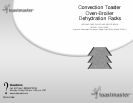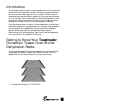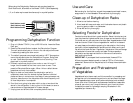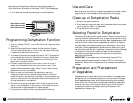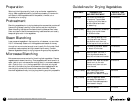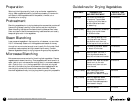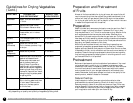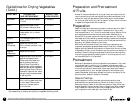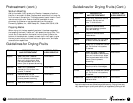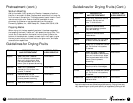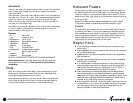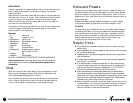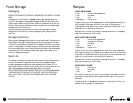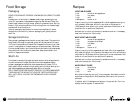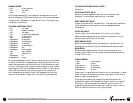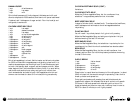
3.2.
Convection Toaster Oven-Broiler Dehydration Racks Use and Care Guide
Use and Care
Before using for the first time, unpack the accessories and wash in warm,
soapy water or in the dishwasher. Rinse well and dry thoroughly.
Clean-up of Dehydration Racks
1. Allow to cool before cleaning.
2. Hand wash with soap and water, a mild abrasive cleaner and plastic
scouring pads, or wash in a dishwasher.
3. Rinse well and dry thoroughly.
Selecting Foods for Dehydration
Foods to be dried should be in good condition. Select fruits that are just
ripe; they have the highest natural form of sugar and are best for drying.
Fruits that are not ripe may have a flat bitter taste. Vegetables should be
fresh and tender. Check fruits and vegetables for marks or bruises and
cut away these portions before preparing for dehydration. Avoid using
overripe fruits and vegetables with spoiled portions. Meat, poultry and
fish should be fresh and lean. Preparation, dehydration time and storage
of foods also influence their quality and taste. Follow preparation
dehydration and storage instructions in this manual to ensure the
best- quality dried foods.
IMPORTANT: If you suspect food is contaminated, freeze at 0˚F for
48 hours to prevent bacteria growth, or heat at 175˚F for 15 minutes to
pasteurize it. Some nutrition may be lost, but it will stop the contamination
process.
Preparation and Pretreatment
of Vegetables
Vegetables dried at home require a little more effort in processing and
storage than do fruits because they are low in acid and have little sugar.
Some vegetables have a poor quality when dehydrated, and are better
frozen than dried. Others, such as potatoes are available at reasonable
prices all year round, and it may not be worth your time to dry them
unless they are used for lightweight camping. Be selective in the
vegetables you choose to dry.
When using the Dehydration Racks one rack may be placed into
Shelf Positions #1, #3 and #5 on the Model TOV211 (Sold Separately).
1, 2, or 3 racks may be used simultaneously in any shelf position.
Programming Dehydration Function
1. Plug unit (Model TOV211) into a 120V AC outlet. Leave the Glass
Door ajar.
2. Press the Dehydrate Button to select the Dehydration Program.
Time will automatically set to 14 hours. You can adjust time lower
if needed by pressing the down arrow.
3. The default temperature automatically sets to 145˚F. Temperature
cannot be adjusted under the Dehydration Program. Place Food
on rack. Food should be evenly spaced and not touching. Then
place rack in any shelf position.
4. Different recipes may require time under or over 14 hours. If
longer time is needed let the timer count down to zero. Then
press the Dehydrate Button again. When 14 hour default shows
press down arrow to time needed.
5. Begin to check on food before the dehydration period is
completed; check food for desired dryness. Remove individual
pieces and store in containers or food bags. If some pieces are not
yet done, leave them on the dehydrator and check frequently until
all food dehydration is completed.
6. Food that is not going to be eaten within a day or two should be
stored in the refrigerator. If storing food in the freezer, be sure to
use containers or bags designed for freezer storage.
7. Unplug oven and allow to cool completely before cleaning.
Shelf Position 3 and 4
Shelf Position 5 and 6
Shelf Position 1 and 2



